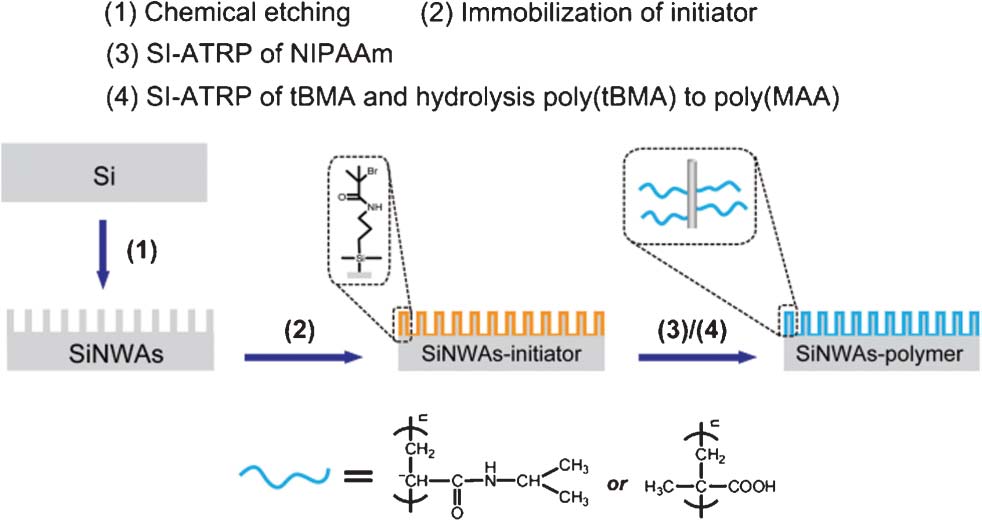The synergistic effects of stimuli-responsive polymers with nano- structured surfaces: wettability and protein adsorption
RSC Advances,
2011,
1,
262-269.
文章链接:http://dx.doi.org/10.1039/c1ra00201e
于谦在RSC Advances发表研究论文
发布日期:2011-12-08
Surface modification with stimuli-responsive polymers leads to switchable wettability and bioadhesion that varies in response to environmental stimuli. The introduction of nanoscale structure onto surfaces also results in changes to the surface properties. However, the synergistic effects of stimuli-responsive polymers with nanoscale structures are unclear. In this work, two typical stimuliresponsive polymers, thermo-responsive poly(N-isopropylacrylamide) (poly(NIPAAm)) and pHresponsive poly(methacrylic acid) (poly(MAA)), were grafted from initiator-immobilized silicon nanowire arrays (SiNWAs) with nanoscale topography via surface-initiated atom transfer radical polymerization. Because of the synergistic effects of the stimuli-responsive conformation transition of polymer chains and the nano-effects of three-dimensional nanostructured SiNWAs, these new platforms possess several unique properties. Compared with their corresponding modified flat silicon surfaces, the introduction of nanoscale roughness enhanced the thermo-responsive wettability of SiNWAs-poly(NIPAAm) but weakened the pH-responsive wettability of SiNWAs-poly(MAA). More importantly, these surfaces exhibited special protein-adsorption behavior. The SiNWAspoly(NIPAAm) surface showed good non-specific protein resistance regardless of temperature,suggesting a weakened thermo-responsivity to protein adsorption. The SiNWAs-poly(MAA) surface showed obvious enhancement of pH-dependent protein adsorption behavior.

